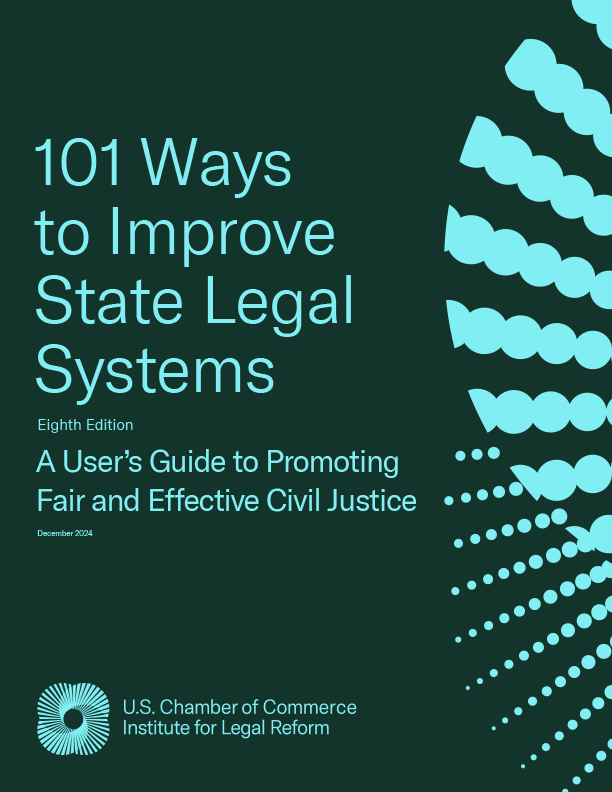Pennsylvania taxpayers shoulder the burden for an increasing number of $1 billion+ natural disasters. Figures from the National Oceanic and Atmospheric Administration (NOAA) show that, between 2020 and 2024, the Commonwealth bore $5-$10 billion in costs related to these events. That’s a significant price tag, especially at a moment of acute concern about affordability. So it is at best confusing and at worst alarming that lawmakers in Harrisburg are considering legislation that could massively hike the cost Pennsylvanians face from extreme weather events.
Below, we show what those cost impacts would be, then explain how the “Extreme Weather Recovery Act” (EWRA) could impose those costs by creating a path for uncapped lawsuits against companies.
Potential Costs of the EWRA
If the EWRA had been in effect between 2020 and 2024, allowing private lawsuits seeking damages from companies for natural disasters, then we can conservatively estimate taxpayers would have faced $26.25 billion in additional costs from the natural disasters NOAA tracks. That’s on top of the $5-$10 billion they already paid. Over that five-year stretch, the increased cost would have had the following impact per household in Pennsylvania:
- $1,684 more in electrical bills
- $455 more in housing costs
- $1,279 more in transportation costs
- $1,421 in costs for all other purchased goods
That makes a total increased cost per household of over $4,800 between 2020 and 2024, or nearly $1,000 per year. Not many households can easily afford another $1,000 per year in unplanned expenses, but that is exactly what the EWRA threatens to impose going forward.
Private Lawsuits Multiply Public Costs
The EWRA would create a path for lawyers to file private lawsuits against companies for harms stemming from weather incidents. The Act (which is very similar to an Illinois bill of the same name) makes clear that any proceeds from these lawsuits will not replace the state’s disaster relief funds or “contractually obligated or court-ordered insurance claim payments.” In other words, the “normal” expenses of disaster recovery and relief that taxpayers already pay will not be lessened in any way by these lawsuits.
At the same time, the bill makes clear that private lawsuits under the Act may seek “the full extent of noneconomic, compensatory, and punitive damages under the laws of this Commonwealth.” It is worth remembering then, that Pennsylvania only caps damages in cases brought against the Commonwealth itself and in medical malpractice cases. In other words, there would be no limit to damages in EWRA cases.
And that brings us to a predictable set of conclusions. First, if the state creates a route for uncapped lawsuits against companies over weather incidents, then plaintiffs’ lawyers will seek every dollar they can get in those lawsuits. Second, if they seek every dollar they can get, then they will seek at least the economic value of alleged harm through compensatory damages, and will probably also seek at least the same amount in noneconomic damages, and in punitive damages.
So, for every dollar in damages the Commonwealth faces in natural disaster recovery costs, you can expect the plaintiffs’ bar to seek at least another three dollars (economic + noneconomic + punitive damages).
A Note on Methodology
To arrive at the $26.25 billion overall cost increase for 2020-2024, we looked at the midpoint of NOAA’s natural disaster cost estimates for each of those years (so, in a NOAA-given range of $1-$2 billion, we assume $1.5 billion).
We then tripled the resulting figures for each year to reflect the assumption that plaintiffs’ lawyers would seek the economic value of compensatory damages and would seek the same amount in noneconomic and punitive damages.
We then made the (admittedly edge-case) assumption that plaintiffs’ lawyers would prevail in each lawsuit filed under the EWRA, or arrive at a settlement value equivalent to prevailing.
We proceeded with the assumption that these lawsuits would be filed against companies in Pennsylvania and, because the EWRA targets companies that “emitted or caused to be emitted” at least one billion tons of CO2 since 1965, we assumed that those lawsuits would be targeted proportionately across industries corresponding to their estimated CO2 emissions in Pennsylvania (which the Energy Information Administration provides) and divided the total cost figure across those industries.
Finally, we divided the resulting industry impacts by household, assuming that companies would fully pass through the costs of any lawsuits to consumers.
We Hope to Be Wrong
Supporters of the EWRA would challenge some of our assumptions. They might argue that plaintiffs’ lawyers will not seek every dollar they can get in lawsuits, or that they would lose or fail to settle most EWRA cases, or that Pennsylvania will bear lower costs from natural disasters than it has historically.
We certainly hope they’re right, and that if the EWRA passes, it won’t create massive new costs for households in the Commonwealth. But it probably will.


